Any suggestions of painting rocks the color of limestone?
Yep… hire a 4 year old:

I use progressive washes, just slopped on with a cheap brush – you don’t want the color to be even. Blotchy is better. I use a very dilute gray with just a touch of burnt umber in it. After that’s done, I apply a quick wash of black to highlight the crevasses and cracks, then dry brush browns, yellows, and whites to complete the effect.
The best method I have ever found for doing realistic rocks is as follows:
- Paint rock castings with cheap, flat, white latex paint; let dry.
- Take the color paint you plan to use (should come close to matching color of dirt in the area), mix 50/50 with water, and brush onto entire rock formation; let dry.
- Fill spray bottle with india ink diluted with water (1 tablespoon of ink mixed into a pint of water, add a few drops of dish washing liquid), spray rock formation to bring out detail; let dry; repeat until desired shading achieved. Shading changes as it dries, so take your time and experiment a little. You can always add more.
- Take Woodland Scenics Earth Colors Liquid Pigments, dab on randomly with 1 inch brush using various shades. While still wet take spray bottle filled with water and a few drops of dish washing liquid and spray onto rocks to dilute pigments so they flow into cracks. Apply more india ink spray, as appropriate.
- Seal with 1 part matte medium (I use Liquitex) and 3 parts water and a few drops of dish washing liquid, applied with a spray bottle. This will keep colors from fading.
I stain my rock castings in my limestone bluffs with a watered down wash of Creamcoat ‘Trail Tan’ followed up with some very watered down ‘Lamp Black’ from Americana. Both are acrylics that cost about a dollar from Walmart or Hobby Lobby.
Jim
That’s a loaded question. What color/prototype locale of limestone? There’s a wide range of possible colors just in my area, including light gray, dark gray, tan and pink, although most is shades of gray. Yours may vary.
Here are some photos of the technique I discussed above.
Photo 1 - Bridge, built by my friend Mike Santos, in place for a test fit. Mike makes these bridges commercially too
Photos 2 and 3 - Lower portion of mountain constructed with foam core (before strenghtening pieces were added to lower postion of foam uprights) and commercial, foam castings from Scenic Express. These were cut apart and blended together with Scultamold (ignore drip in foreground - occurred before decision to document this process [:O]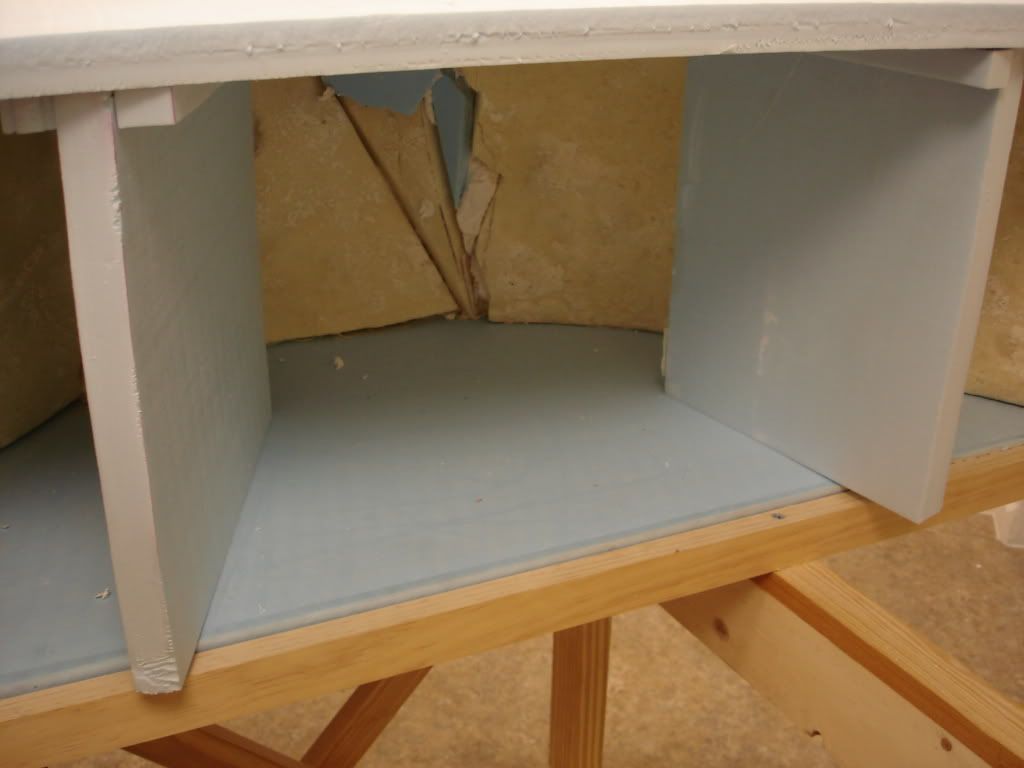
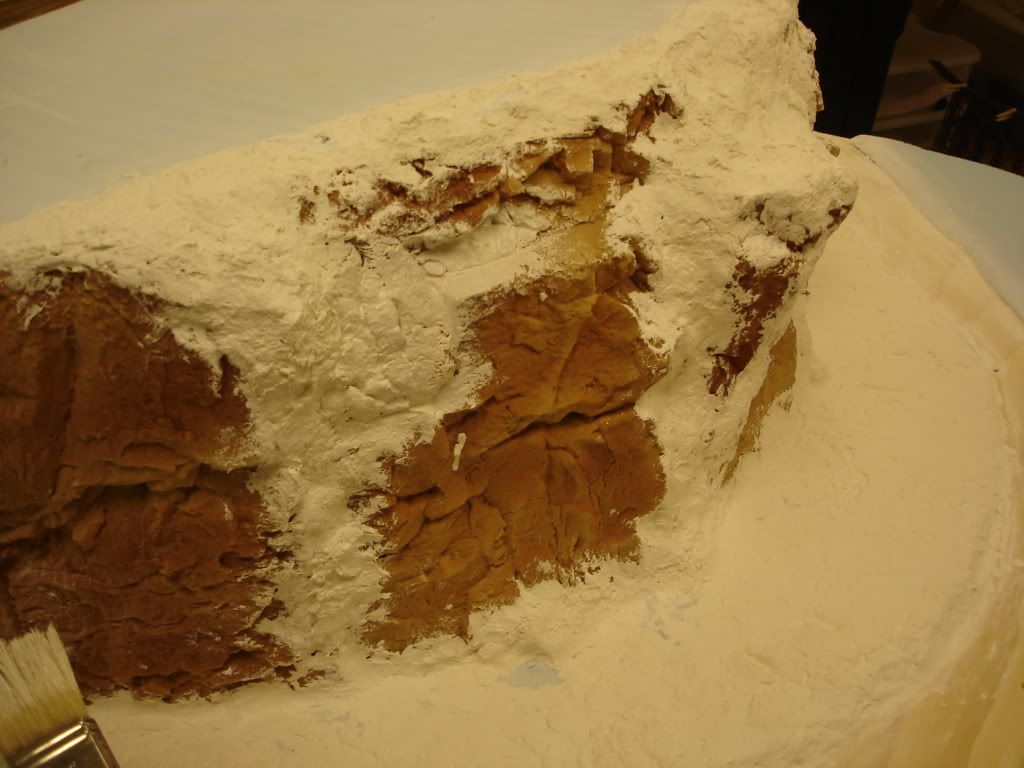 Photo Photo 4 - rock castings painted with white latex paint to seal and give castings uniform base color.
Photo Photo 4 - rock castings painted with white latex paint to seal and give castings uniform base color.
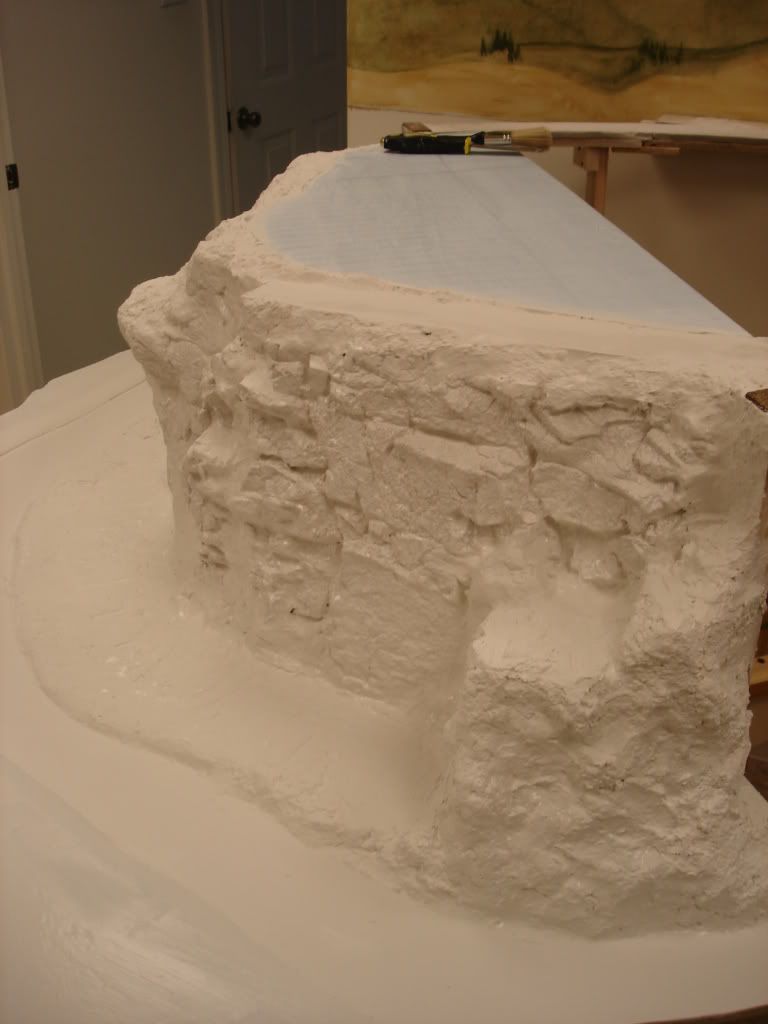
Photo 5 and 6 - Rock castings painted with a thinned latex paint (40percent paint, 60 percent water) that I used for my dirt and rock castings.
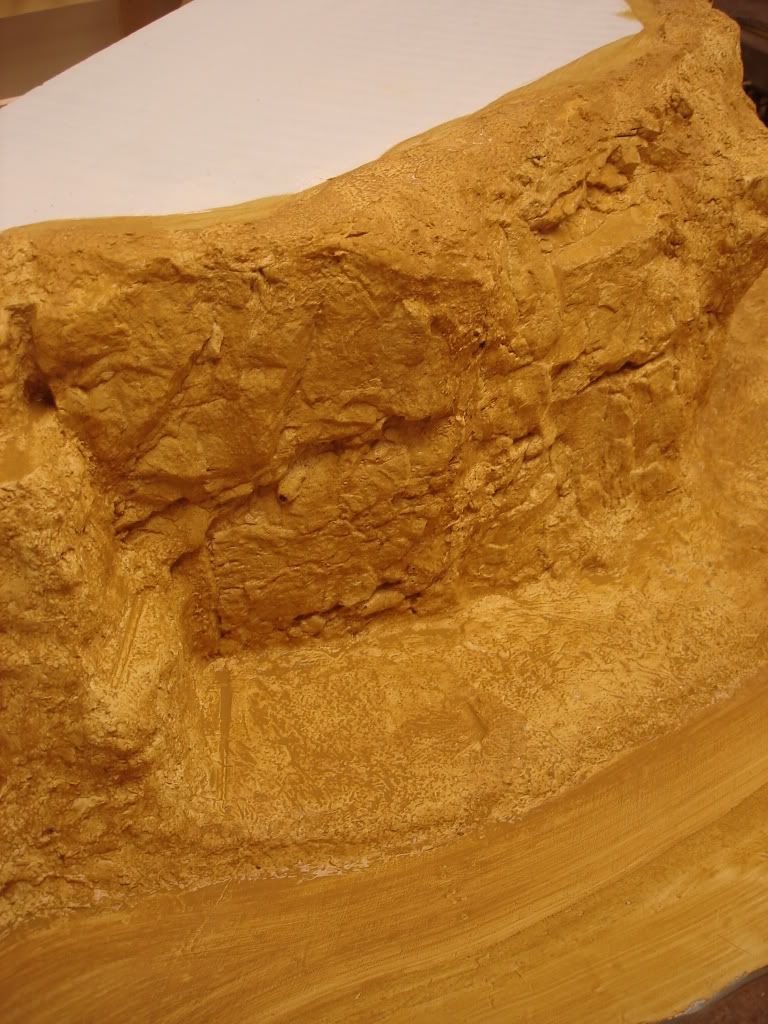

Will post more photos after ink wash, tinting colors, and drybrushing are applied. I think this technique makes the rocks take on a natural tone. If you just paint the rocks with full strength paint, they tend to have a “dead” look.
I use a cheap foam brush from the dollar store. I make very dilute washes of burnt umber 5/1, light yellow 5/1, and tunnel black 15/1.
These are Hydrocal castings. I dab on the two colors in splotches, let them dry for a few minutes, then cover the entire rock with the black rinse. You can repeat the last step as many times as you deem necessary.
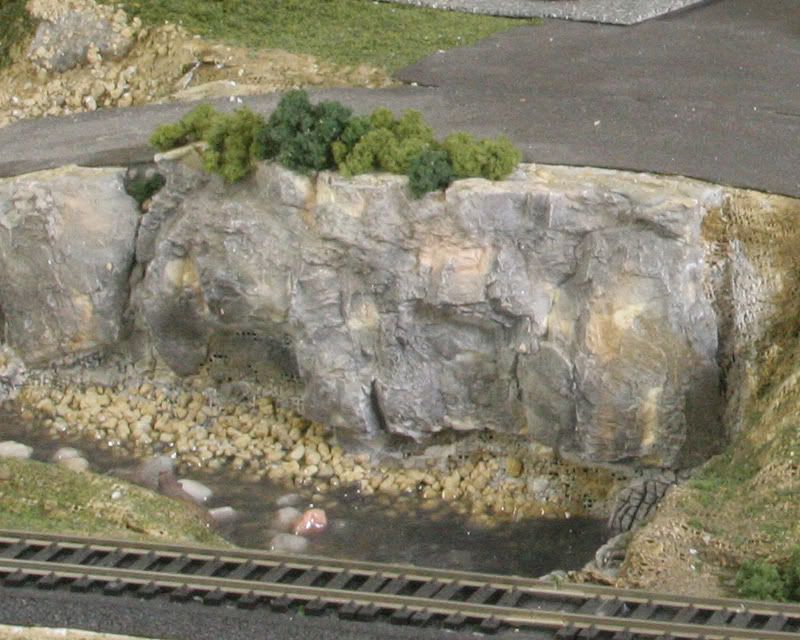
Limestome deposits are a sedimentary type of rock. They are usually found on old seabeds, and many time are layered with sandstone. Here along the Mississippi River Valley, you will see the alternating ‘bands’ of grey/tan in rock cuts. The limestone deteriates quite fast and lots of sink holes and caves result. Here is an example of the cuts made in the bluffs on my HO model railroad:
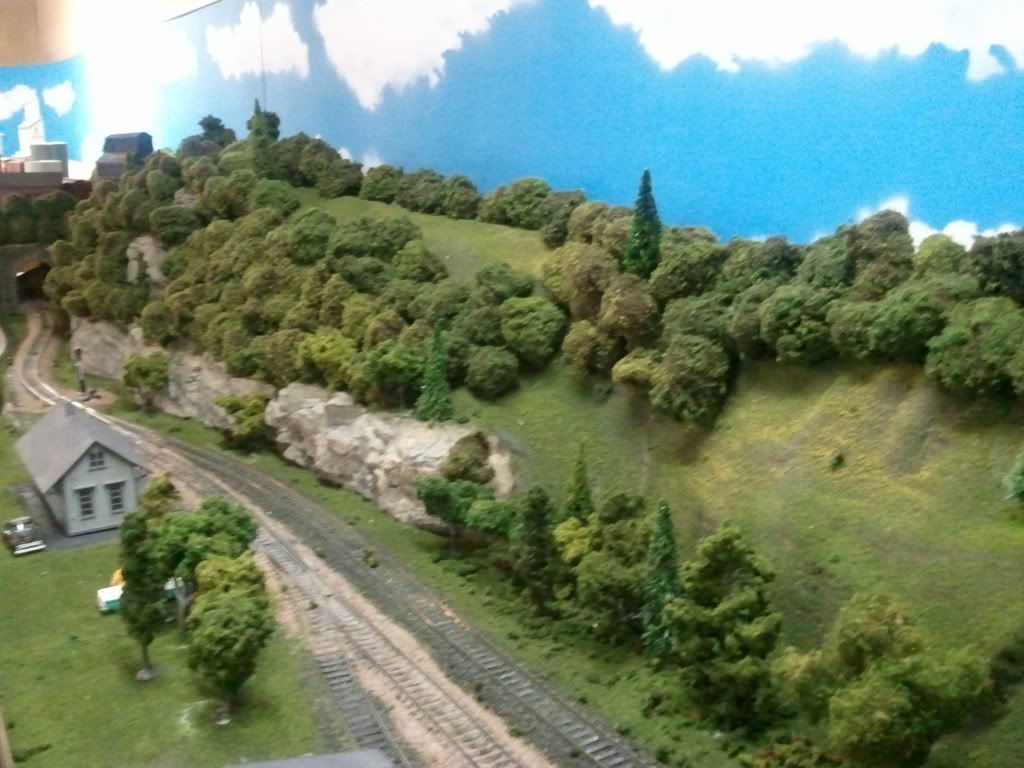
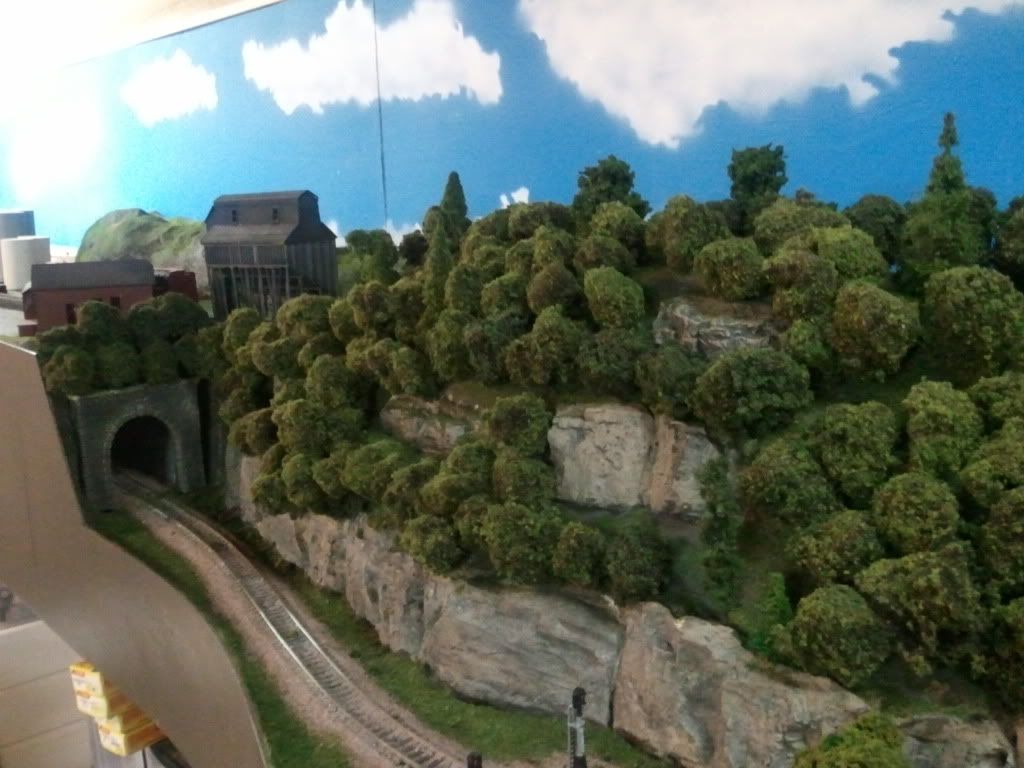
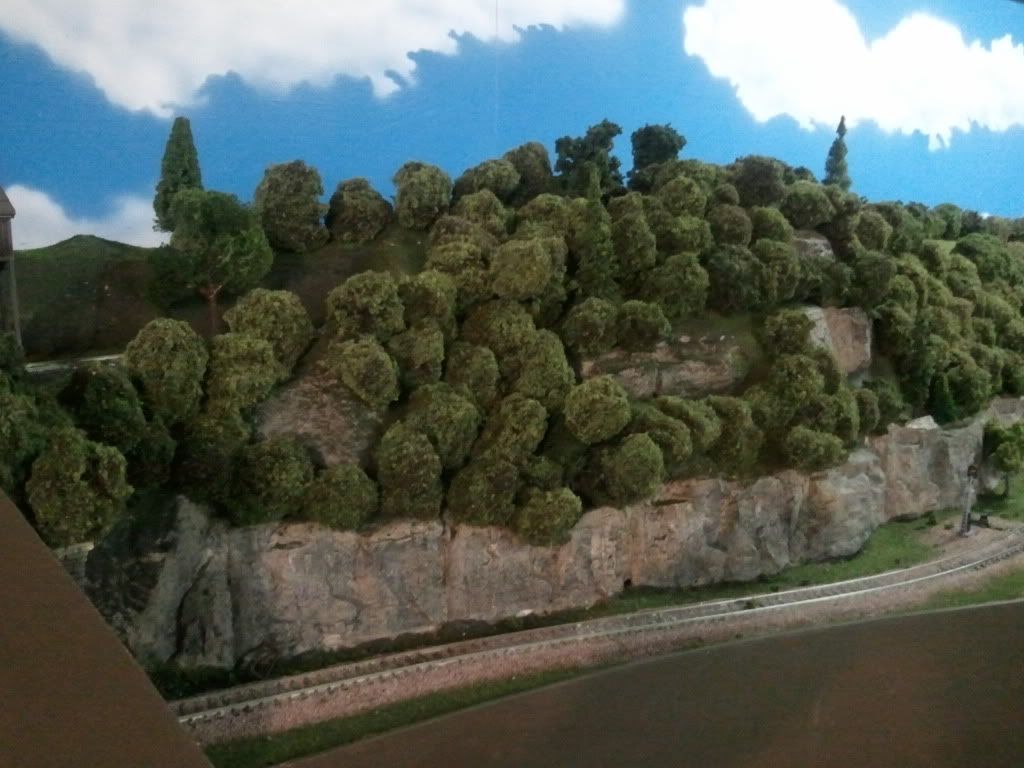
I use acryic ‘washes’ of grey and tan to stain my rocks. A super thin wash of lampblack acrylic or India Ink brings out the ‘depth’ in the rocks.
Jim
Hello
When you say acrylic wash are you mixing with water and if so how much paint to water ratio? This is all new to me.
I usually thin the stuff down with 5-10 parts of water to 1 part of paint. You want a ‘wash’ that you can brush over the plaster rocks. The ‘lampblack’ is even thinner. I spray alcohol or water over it with a mister to wash of most of the paint - You just want the crevices to have black so that it adds ‘depth’ to the rock work. Just experment - you will find the ratio that works for you paint and rocks!
Jim